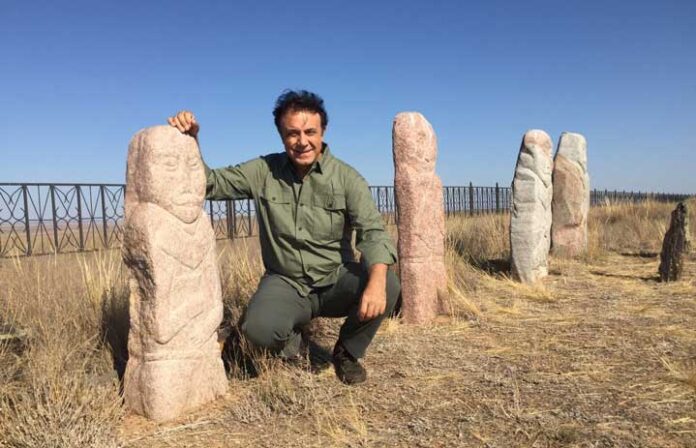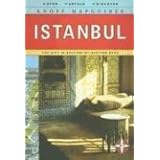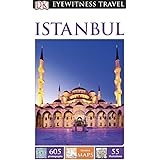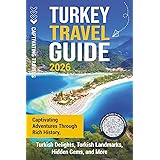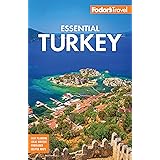Time Traveler – In Search of Turks/Jewish Turks; Karaims
They are on the verge of extinction… They speak Turkish, they pray in Turkish. They seek their religious identity in Judaism and their national identity in their Turkish roots. They consider themselves descendants of the Khazars, the greatest power of the Middle Ages. But the direction they follow on the path of faith is very different from those of other Turkish origin. What are the historical and cultural ties of these people, who belong to the Karaite sect of Judaism, with the Turks? Do they have relations with Ashkenazi communities in Eastern Europe? Could they be the unknown 13th tribe of the Jews?
Time Traveler – In the Footsteps of the Turks/Forgotten arm of the Turks in the West; Gagauz
“Time Traveler” makes its last trip to Bessarabia, the precious land of the Ottoman Empire for the 2nd season. He meets our Orthodox Christian brothers, about whom we know little. In the current documentary prepared and presented by Ahmet Yeşiltepe, the history and present of the Gagauz people living in the Gagauz Autonomous Republic of Moldova comes to the screen.
How did the Gökoğuzs, the westernmost branch of the Oghuzs, become Christians? Gagauz are the branch of the Oghuzs, which is known as the core community of the Turks of Turkey, who adopted Christianity in the Kipchak geography. “Time Traveler” enters the life of Gagauz people from weddings to funerals, from the table to the field, discovering the cultural richness of this community, which resembles Anatolian Yoruks in terms of appearance, face, dialect and dialect.
Time Traveler – In the Footsteps of the Turks/Turks in the Crimean Peninsula
This part of the documentary series begins with Haytarma, namely the exile ordeal of the Crimean Tatars. Our brothers lost with the Küçük Kaynarca Agreement… Crimean Tatars… Images from Feodosya, Kefe city. Ivan Ayvazovski’s exquisite Istanbul paintings. Yalta and the Crimean coast. Livadiye Palace. Swallow’s Nest. The longest trolleybus line in the world. Gorgeous Crimean coast. West coast of Crimea. Kezlev, Observatory. The Han Mosque is the northernmost work of Mimar Sinan. Folk poet Aşık Ömer. Historical Mevlevi Lodge. St. Baba Lodge. Traces of the First and Second World Wars in Crimea.
And a great Turk; Ismail Bey Gaspirali. His museum house in Bahçesaray. Tercüman newspaper published by Gaspıralı in the museum. And Tatar Exile. Don’t worry. Painful, heartbreaking stories. Undoubtedly, they have a special position among Turkish communities. Ottoman cavalry, diplomat, comrade, Crimean Tatars, one of the founding powers of the Republic of Turkey… The “Time Traveler” is going to Bahçesaray, the capital of the Crimean Tatars. It brings their sad stories of exile back to the screen. In this section, detailed information about the Crimean Tatars is given.
Time Traveler – In Search of Turks/Crimean Tatars
Crimean Tatars… They have a special position among Turkish communities. Ottoman cavalry, diplomat, comrade, one of the founding powers of the Republic of Turkey, the Crimean Tatars… The “Time Traveler” is going to Behçesaray, the capital of the Crimean Tatars. It brings their sad stories of immigration and exile to the screen. He closely follows the process organized after Russia’s invasion and annexation of Crimea. The train journey, which starts in Odessa, Ukraine, ends in Simferepol. It follows the traces of a forgotten history in the Tatar name “Akmescit”.
The Khazar Empire, the Great Bulgarian State and the remnants of the Golden Horde are telling about the Khanates one by one. It tells the little-known story of Tatar noble peoples who migrated and settled in the Crimean peninsula. Later, he reaches the memory of Sultan Baybars… He finds traces of Seljuk history in Suğdak Castle. It deals with the relations of this ancient people of Kipchak geography with the Ottoman Empire. He enters the Khan’s Palace in Bakhchisaray.
From the Fountain of Pushkin’s Tears to the Summer Gazebo, from the Falcon Tower to the tombstones, it brings the smallest detail to the screen without missing. It tells the extraordinary story of the Crimean Khan Haji Giray. He listens and narrates the stories of Zincirli Madras that transcends the ages. He takes a closer look at the exile of the Crimean Tatars and explains the suffering and separation with examples.
Time Traveler – In the Footsteps of Turks/Chuvash and the forgotten plural suffix of Turkish…
The “Time Traveler” visiting the National History Museum reveals the forgotten bond between the Chuvash and the Anatolian Turks. Epics, songs, sayings are the cultural treasures carefully preserved by this people who speak a Ural-Altaic language. The stories of Historian Prof.Yegorov Nikolai Ivanovich are full of valuable historical and scientific notes that require Turkey to look more carefully at the Chuvash people. The “Time Traveler”, who goes to a Chuvash church and talks to the priest who conducts the service there, also has an unusual discovery.
This discovery is that one of the first cosmonauts in space was the Chuvash. Visiting the house of the proud Chuvash Andriyan Nikolayev, which is now a museum, the “Time Traveler” meets with the extraordinary memory of Nikolayev, as the Chuvashs there say, “the first Turk in space”. idioms are the cultural treasure carefully preserved by this people who speak a Ural-Altaic language.
Time Traveler – In Search of Turks/Misher Tatars, Chuvashs and a historical city; Simbirsk…
A tribe among the Idil-Ural Tatars; Mishar Tatars… Their lives in the Kipchak plains of this tribe belonging to the Islamic religion, their village life… “Time Traveler” is once again on an extraordinary journey. This time the route; Following the banks of the Idil Simbirsk, today’s name Ulyanovsk. On the way from Kazan to Ulyanovsk, where Lenin was born, the “Time Traveler” stops by a village belonging to the Mishar Tatars.
Aleksandr Kerensky, one of the leaders of the February Revolution that put an end to the monarchy in Russia, the architect Vladimir Ilyich Lenin of the October Revolution, and Yusuf Akçura, one of the first theorists of Turkism, are some of the names born in Ulyanovsk… Here we go on a different time journey between the Turkish-origin communities Misher Tatars, Chuvashs and Mongolian-origin Kalmuks. . In the previous part, he first battles the troubled neighborhood of the Tatars with the Russians for nearly 1000 years, He met the heroes of forgotten stories in the Kazan Kremlin.
The most important of these was Süyümbike Hatun, known as the last Kazan Khan. The “Time Traveler”, which tours the Kazan Kremlin, that is, the “Kaleiçi” region and introduces the artifacts and objects in the museums here, brought a little-known real history to the screen. Abdullah Tukay, one of the greatest poets of the Turkish language, who instilled in a people the consciousness of being a nation, was one of the most important topics of this section.
Tukay, the national poet and national hero of the Tatars, died when he was only 27 years old. Despite his short life, Tukay’s little-known story in Turkey, who raised the Tatars against Russia and led the struggle for freedom and rights, was also screened in “Time Traveler”. He met the heroes of forgotten stories in the Kazan Kremlin.
Time Traveler – In the Footsteps of the Turks/The legacy of the Golden Horde; The Tatars, the warrior people of the Kipchak plains
The history of Kazan, the capital of Tatars, is the most important topic of this section. “Time Traveler”, which tells about the troubled neighbors of Tatars with Russians for nearly 1000 years, first through wars and then “the ideal of living together”, meets the heroes of forgotten stories in the Kazan Kremlin. The most important of these is Süyümbike Hatun, which is known as the last Kazan Inn. “Time Traveler”, which tours the Kazan Kremlin, that is, “Kaleiçi” region and introduces the artifacts and objects in the museums here, brings a little-known real history to the screen.
Abdullah Tukay, one of the greatest poets of the Turkish language, who instilled in a people the consciousness of being a nation, is one of the most important topics of this section. Tukay, the national poet and national hero of the Tatars, died when he was only 27 years old. Despite his short life, he resurrected the Tatars against Russia, The little-known story of Tukay, who led the struggle for freedom and rights, is also in “Time Traveler”. Idil – Ural Tatars or “Kazan Tatars”… “Time Traveler” in this second “Tataristan” part tells about Tatars who have built an enormous cultural basin, established civilizations and states on the arms of the giant river called Volga by Russians.
He goes to Kazan, the capital of present-day Tatarstan. He discovers extraordinary stories in the old quarter of the Tatars, who ruled the Russians for 500 years. He gives examples of the cultural equivalent of the saying “If you dig up a Russian, a Tatar will emerge from it”. He discovers the sad story of Süyümbike Hatun, the adopted mother of Tatars, in the Kazan Kremlin, the most intact fortress building after Moscow. He shares the striking details of the Russian fortification on Sviyazshk Island to capture Kazan.
Later on, When the Golden Horde eventually turned into a Turkish-Mongolian empire, they were the ones who had a say in its administration. The 6 Tatar-Kipchak Khanates that emerged when this empire was destroyed by Tamerlane contributed greatly to the ethnic and cultural diversity of today’s Russia. In this part of “Time Traveler”, there are interviews with the leaders of Tatars who have a national consciousness.
Time Traveler – In the Footsteps of the Turks/A people who ruled the Russians for 500 years; Kazan Tatars
Idil – Ural Tatars or “Kazan Tatars”… “Time Traveler” tells about Tatars who built a huge cultural basin, civilizations and states on the arms of the giant river that the Russians call the Volga. He goes to Kazan, the capital of present-day Tatarstan. He discovers extraordinary stories in the old quarter of the Tatars, who ruled the Russians for 500 years. He gives examples of the cultural equivalent of the saying “If you dig up a Russian, a Tatar will emerge from it”.
He discovers the sad story of Süyümbike Hatun, the spiritual mother of the Tatars, in the Kazan Kremlin, the most surviving fortress building after Moscow. He shares the striking details of the Russian fortification on Sviyazshk Island to seize Kazan. Later, he tells the story of the Golden Horde Empire, considered the ancestor of the Kazan Tatars and the Turkish and Tatar civilizations that emerged in the Kipchak steppes.
The Golden Horde, which emerged with the Turkish-Mongolian fusion, changed the fate of the Kipchak geography. “Time Traveller” makes a comprehensive trip about the customs, language and beliefs of the Tatars. In this section, the establishment process of the Golden Horde, a forgotten empire despite writing the golden pages of Turkish history, is discussed in archaeological ruins. Among them, Bulgar, the ancient capital of the Tatars, who converted to Islam in AD 922, is the most important.
Despite the invasion of the Mongol army, the “Bulgarian Tatars” or the Great Bulgarian Khanate were the ones who founded the Golden Horde and gave it a state identity. When the Golden Horde eventually turned into a Turkish-Mongolian empire, they were the ones who had a say in its administration. The 6 Tatar-Kipchak Khanates that emerged when this empire was destroyed by Tamerlane contributed greatly to the ethnic and cultural diversity of today’s Russia. In this part of “Time Traveler”, there are interviews with the leaders of Tatars who have a national consciousness.
Time Traveller – In Search of Turks/Following of Scythians… The mysterious story of “The Man in the Golden Dress”
“The Time Traveler” delves into a little-known history in the second season of his long journey through the Turkish geography of Central Asia. In the dark corridors of this deep history, he seeks answers to the questions “Who are the Scythians, can their origins and past be associated with Turkish noble tribes”. Therefore, he goes to Almaty, Kazakhstan. Here, he views the Scythian kurgans surrounding the city and evaluates Scythian history in the company of experts.
He visits the National Archaeological Museum in Almaty. Here, he brings the story of the “Man in the Golden Dress” to the screen, many of which were unearthed during archaeological excavations across Kazakhstan. It then goes to the Tamgali Strait, 160 kilometers from Almaty. It tells the forgotten true stories of an extraordinary history in Tamgalı, one of the richest areas of petroglyph-rock painting on earth.
Time Traveler – our close relatives in East Turkestan; Uighurs
The “Time Traveler” crosses the God Mountains and heads south. It enters the geography known today as China’s Xinjiang Uyghur Autonomous Region. This is actually the land that the Turks call “East Turkistan”. The ancient people living here, the blood brothers of the Turks, are the Uyghurs. The Uighurs, who built an enormous civilization in the Tarim Basin and the Taklamakan Desert, are in a way the community that took the first important step among the nomadic tribes and settled down. In the forgotten corridors of deep history, he reaches the little-known stories of the Uyghurs, their magnificent history that is tried to be forgotten.
The Anatolian Turks, inspired by the Uyghurs, placed the verb “civilization” in their language as a synonym for the word “modernization”. “Time Traveler” brings the details of this story to the screen with actual testimonies.The “Time Traveler”, who stops by the Silk Road cities in East Turkestan, tells extraordinary stories from Urumqi, Gulca, Turfan and Kashgar. In particular, he photographs the mummy of the 4,000-year-old “mother” of today’s Uyghurs in Urumqi and explores the mysterious aspects of archaeological discovery. Who was Miss Lolen? You can watch Miss Lolen, who is called the grandmother of the Uyghurs, and her surprising story in this episode.

